
Starting the Development of a
Hybrid System for Racing
It was in December of 2005 that Toyota decided to consider the possibilities of a racing program using cars with hybrid systems. At the time, there were no racing cars with hybrid systems and no races that such cars could enter. So, the main issues for consideration in the early stages of this venture were the directions such system development should take and what races to gear the results toward.


The First Race Participation:
Finishing the Tokachi 24 Hours Race
The work of formulating an image for the desired racing car hybrid system included not only the Motorsport Division but also input from other divisions throughout Toyota. As the first race to participate in, the initial choice was the Tokachi 24 Hours Race held at Hokkaido's Tokachi Speedway.
This was the year that, in anticipation of the future growth of eco-consciousness in racing, the Tokachi 24 Hours Race had established a new Production 1 (P-1) class for hybrids and other eco-friendly cars (however, the LEXUS GS450h had already been certified as a specially approved car for entry in the Super Taikyu ST-1 class and thus had approval to enter to race). So, Toyota decided to enter the race with its latest production hybrid car, the LEXUS GS450h, with a capacitor in addition to its nickel-metal hydride battery. This was based on the conclusion that a hybrid system for a racing car would require a capacitor's potential for more rapid charging and discharging qualities than a battery alone could provide. This gave the hybrid system as a whole a total output of 254kW (345PS). And this car that Toyota entered in the race was able to finish the entire 24 hours in 17th place without any major problems, while gathering a wealth of data in actual race conditions.



A world's-first achievement,
an overall win in the Tokachi 24 Hours Race
Based on the data and experience gained from competing in the Tokachi 24 Hours Race with the race-modified version of the 2006 hybrid production model LEXUS GS450h, the development team went on to develop a one-stage more advanced race-specific hybrid system in 2007 and entered the Tokachi 24 Hours Race once again.
For the base car, the team chose the Supra car then competing in the GT500 class of Japan's most competitive GT car race series, the SUPER GT. The modified 3UZ-FE naturally-aspirated 4500cc V8 engine on this Supra delivered a maximum output of 353 kW (480PS) through a transaxle but, in what amounted to a major modification for this new race-specific version, a 150kW MGU (motor-generator unit) was added in front of the transaxle and two 10kW in-wheel MGU motors (sum total of 230 PS) were added on the back sides of the right and left front brake rotors. And, as a first for a race-specific hybrid system actually used in competition, a capacitor was added to replace the existing battery pack as the energy storage and release apparatus, thus creating a system that would become the origin of what was later called the Toyota Hybrid System - Racing (THS-R).
The resulting Supra HV-R that competed in the GT Group/TP-1 class of the 2007 Tokachi 24 Hours Race was able to complete the race without trouble, despite difficult conditions including intermittent rain. And not only did it finish but it won the race outright over the 36 competitors, completing 616 laps (3,136 km) in the allotted 24 hours. This was the first time in history that a hybrid car had claimed the overall win in a renowned race classified as an International Event. What's more, due to the effect of the hybrid system, fuel consumption during the race had been reduced by more than 10%, and due to the effect of the front-wheel generation system, it was verified that the wear on the front brakes had been reduced to less than half the anticipated level.

Taking on Tough Hurdles with the Goal of Winning
the 24 Hours of Le Mans
At the time of that victory at the Tokachi 24 Hours Race, there was no racing category to be found anywhere in the world that would be open to a car with a full-fledged race-specific hybrid system. What's more, calculations aimed at the prospect of entering a car combining a gasoline engine and a race-specific hybrid system in a race like the 24 Hours of Le Mans indicated that achieving the level of kinetic performance of successful Le Mans race machines would require a system with a weight of more than 600 kg. The conclusion was that to win at Le Mans the system weight would have to be reduced to less than 1/6th that amount, or less than 100 kg, which by any standard appeared clearly be next to impossible to achieve.


TS030 HYBRID Working Toward WEC/Le Mans
Participation with the TS030 HYBRID
In order to enable a hybrid car to participate in the Le Mans/WEC, a relaxation of the regulation of the LM P1 class was enacted, and with that, Toyota announced in 2012 that it would participate in the 24 Hours of Le Mans of the FIA World Endurance Championship (WEC) and unveiled its TS030 HYBRID racecar.
The "THS-R" race-specific hybrid system initially mounted on the TS030 HYBRID deployed motor generation units (MGUs), which combined energy regeneration and drive force output, in the rear gearbox and in the front end. However, a later revision in the WEC technical regulations dictated that regeneration could only be conducted at either the two front or rear wheels but not both, and that regeneration and drive force could only be applied together at one of the axles. As a result of subsequent review at Toyota, it was concluded that the front MGU had to be removed from the car that would race at Le Mans. And to compensate, a new "super-capacitor" with boosted electric storage capacity called the electric double-layer capacitor was adopted.
The technical regulations for engine displacement were also changed, to allow naturally aspirated gasoline engines of up to 3.4 liters, turbocharged diesel engines of up to 3.7 liters and turbocharged gasoline engines of up to 2 liters. Of these, a 3.4-liter naturally aspirated gasoline engine was chosen for the TS030 HYBRID. For the 13.629 km Le Mans Sarthe Circuit with its seven braking zones, the regulation limited hybrid systems to recovering a maximum of 0.5kJ per zone and 3.5mJ per lap.

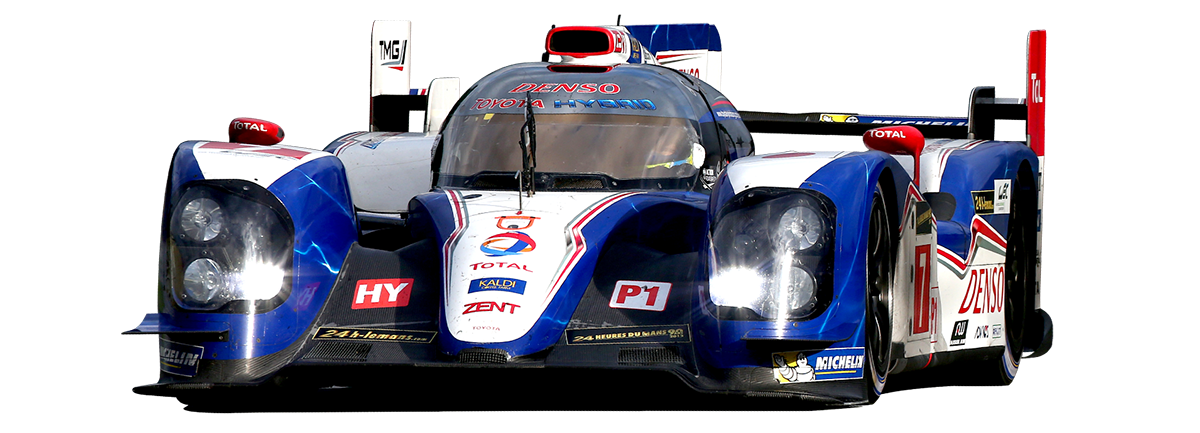
Coming Out with a More Advanced TS030 HYBRID
The THS-R system on the 2013 model TS030 HYBRID basically inherited the same specifications as the 2012 model's, while adding greater system efficiency and higher precision in coordinated brake control. However, due to the space left by the removal of the front MGU the car's monocoque and suspension had to be redesigned, and the front end was reshaped to get a smoother line form the fender to the nose and improve aerodynamics. As for the THS-R system, new improvements gave it an output of 300 hp, complimenting the 530 hp of the V8 gasoline engine.
When the team took this 2013 model TS030 HYBRID to the 24 Hours of Le Mans, they came so close to winning the race outright before finishing a very respectable 2nd to mount the podium.

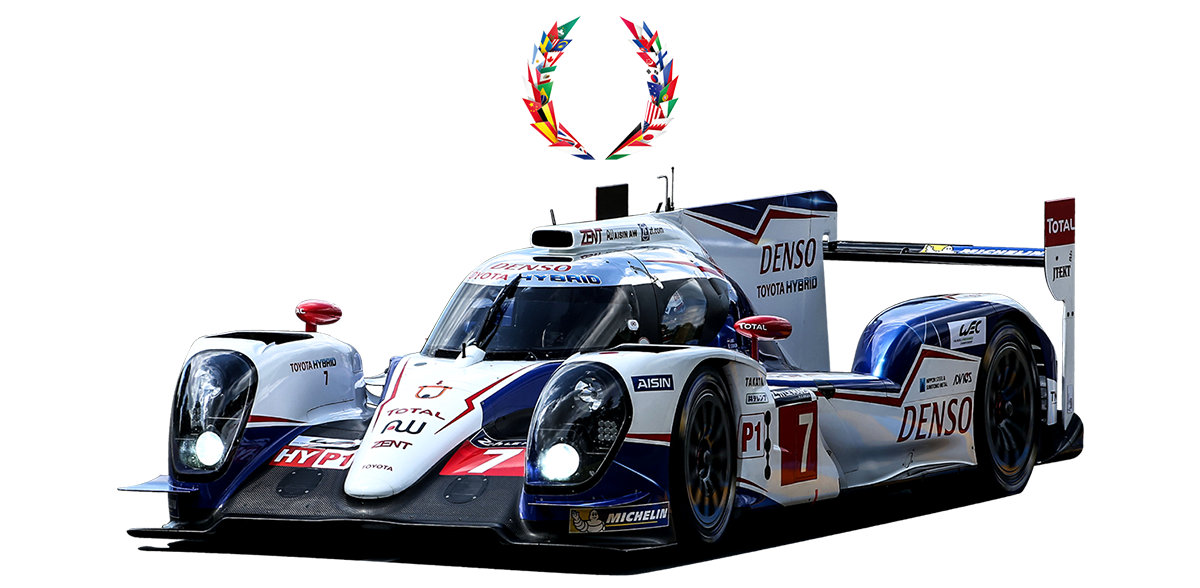
New technical regulations give birth to the TS040 HYBRID
For 2014, big changes were made in the technical regulations for the cars. Limitations on the displacement of gasoline engines and the requirement for intake restrictors were eliminated. Meanwhile, changes were also made in the regulation concerning hybrid systems. The limits on energy release per sector of the circuit were eliminated and replaced by a choice of random selection of four levels of maximum energy release (2MJ/4MJ/6MJ/8MJ) for one lap of the Sarthe Circuit.
When thinking solely in terms of energy release, the larger values would seem attractive, but they also meant added system weight that would inevitably affect running performance disadvantageously. Also, because of the increased energy recovery, a new limit was placed on fuel tank capacity in the technical regulations. Based on the fact that the hybrid system performance, its weight and its weight distribution affect the car's running performance, the development team sought the best balance, and in the end, they decided to go with a released energy level of 6MJ per lap. In accordance with this decision, a further evolution of the super-capacitor structure was made. As a result, to the 520 hp of the naturally aspirated 3.7-liter V8 engine the hybrid system added another 480 hp to bring the output total up to an awesome level of more than 1,000 hp.
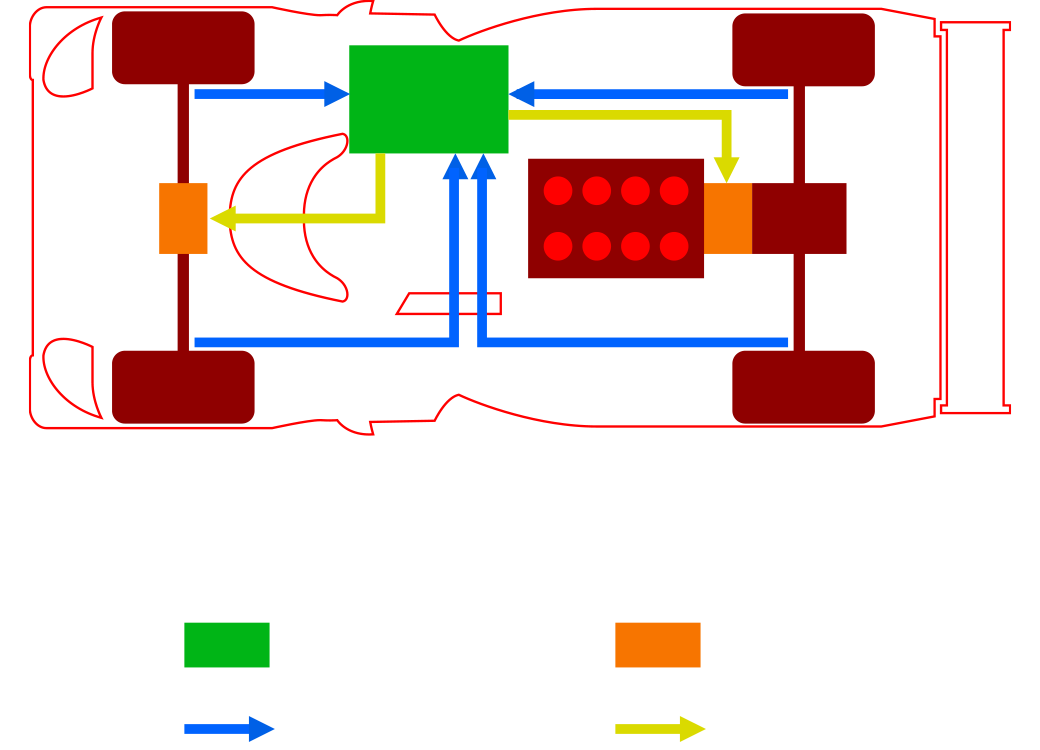

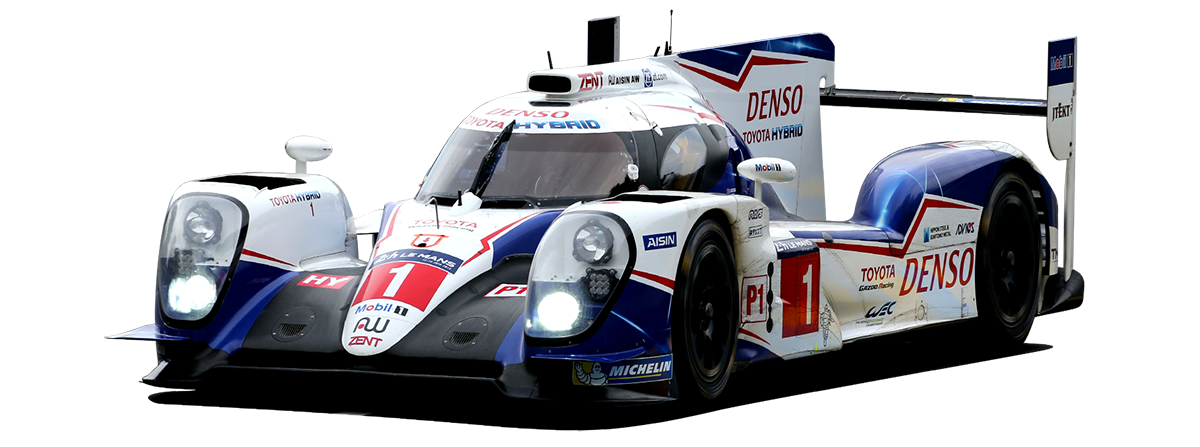
Further progress in stability and durability.
Technological returns for production models too
Improvement of the THS-R system focused on how to make full use of the power units with their awesome total of more than 1,000 hp in a way that was smooth as well as efficient with minimal waste. The key component in the THS-R system was the super-capacitor with its capacity to regenerate large amounts of energy quickly during deceleration and then release it instantly when needed. In 2015, with the aim of getting even better performance out of the 2014 model's super-capacitor, its structure was reviewed and revised and ended up delivering strong hybrid power with greater stability than in 2014.
The year 2015 brought improvement in the Toyota TS040 HYBRID for the 24 Hours of Le Mans with greater refinement of the hybrid system and review and improvement of the suspension geometry. In pre-season tests the TS040 HYBRID piled up some 30,000 km of tests with no major problems. It also successfully completed a 6,000-km test simulating the Le Mans race.
But races can't be competed with reliable system performance alone. When considering the 24 Hours of Le Mans regulation, the change in regulation from 2014 when there were limits on energy release for each sector of the circuit to the 2015 regulation where the limit was for an entire lap, meant more strain on the capacitor as an energy storage device, which despite its advantage in quicker charging and discharging was at a disadvantage in terms of charging capacity per unit of weight. Porsche had entered the WEC with a car mounting a lithium-ion battery and it was beginning to exert its performance potential effectively. Despite the fact that the system of the TS040 HYBRID had become more refined, the competition it faced was now stronger, and although Toyota had gone to the 24 Hours of Le Mans with a must-win stance, the race didn't go as hoped. In the WEC competition as well, it turned out to be a disappointing season with the only podium finishes coming with two 3rd places at the opening round at Silverstone and the final round at Bahrain, leaving Toyota 3rd in the Manufacturers Championship.

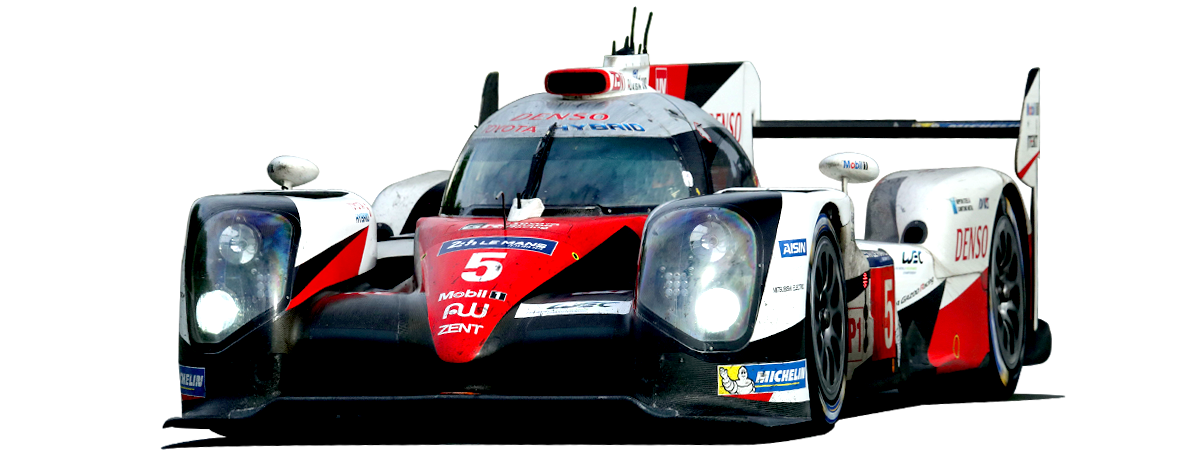
Full-scale improvements based on the latest regulation
After thorough investigation of the implications of the change in the charging/discharging regulation from 2014, the development team reached the decision that they should introduce a new engine, which had been under development during the race season, and a new energy storage apparatus. Whereas in the previous year they had decided to go with a 6MJ max. energy release per lap out of concern for system weight, with the success of an exclusively developed lightweight, compact high-power lithium-ion battery that could handle 8MJ energy release, it was adopted to replace the existing super-capacitor. Furthermore, development of a V6 direct injection twin turbo engine that would be easier to tune to fit different conditions during the WEC series was accelerated to make it available in time. The result was a completely new and improved power train.
Since the time Toyota had begun competing in WEC with hybrid racing system machines, the trend in international motorsport had shifted from trying to increase horsepower in conventional internal combustion engines by building higher-revving engines to the same direction that was being pursued in production cars of limiting the amount of fuel used and increasing heat efficiency in order to boost horsepower. What the THS-R system on the 2016 model TS050 HYBRID represented was nothing less than advanced-development efforts to use the race circuit as a fast-track proving ground to pioneer the next generation of Toyota hybrid systems (THS/THS-II).
By making big changes in the main components, the 2016 model TS050 HYBRID was reborn with a highly competitive power train but went into the season's opening round at Silverstone with much of the fine tuning still to be done. Amid upsets like the dropping out of some rivals, it managed to take 2nd place overall. In round two at Spa-Francorchamps, despite having to drop out late in the race due to machine trouble, it showed impressive performance in leading the race in run-away fashion until the late stages. From there, sporting the advertising phrase, "Toyota, are you OK with losing?" the team were off to the long-awaited 24 Hours of Le Mans.
By the time of this 24 Hours of Le Mans race that had been the season's biggest target, the machine performed to expectations and led the race until 23 hours and 57 minutes. It was then, just as the victory goal was before the team's very eyes that the machine suddenly lost power and began to slow. Finally, in an incredible twist of fate, the car came to a stop with just one lap remaining. The TS050 HYBRID with its aerodynamics developed specifically for the Le Mans circuit had trouble competing at some other circuits, but at its home circuit of Fuji Speedway it had won the 6 Hours of Fuji race in magnificent form.

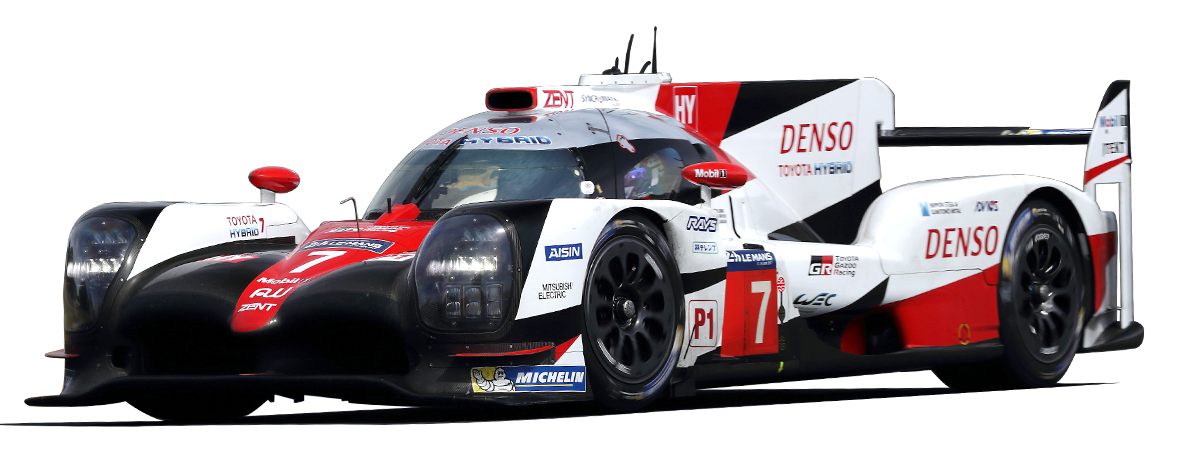
New Aerodynamics and Drive Train Aimed
at finally winning the 24 Hours of Le Mans
In 2016, the TOYOTA GAZOO Racing team had come just three minutes short of winning its long-sought victory at Le mans. Determined not repeat the same mistake, no efforts were spared to make sure the 2017 model TS050 HYBRID was developed to perform flawlessly. Measures were taken to accommodate changes to the technical regulations, including new rules concerning aerodynamics and a reduction in the number of tires that could be used. As a result, broad-reaching revisions were made in everything from the chassis to the powertrain, to the extent that the only thing that remained the same from the previous year's car was the monocoque.
In terms of aerodynamics, revisions were made mainly to the front and the shapes and configuration of the side pontoons to compensate for the loss of down-force while minimizing the increase in air drag.
Regarding the engine and hybrid system comprising the power train with as well, efforts were made to improve output in order to make up for the time loss resulting by the new aerodynamics regulations. Because there is a limit on the amount of fuel that can be used in WEC races, it is necessary to get as much output from the engine as possible from the limited fuel supply, which means that the object of engine development is to raise the engine's heat efficiency to the highest level possible. To do this, the development team increased the size of the turbocharger, raised the compression ratio to the anti-knocking limit, while at the same time searching for ways to run the engine on a leaner burn.
As for the hybrid system, in addition to efforts to reduce the size of the electric motor and increase the efficiency of the control system, improvements were also made on the high-power lithium-ion battery. To enable faster charging and discharging, the system voltage was increased, and resistance lowered, resulting in a system capable of maintaining a high level of performance even at higher temperatures. This also contributed to a big boost in battery durability.
The WEC 2017 season that Toyota entered with its new TS050 HYBRID began with two wins in a row at the opening round and Round 2, and for the 24 Hours of Le Mans that was the team's biggest objective, it entered three TS050 HYBRIDs. In the Official Qualifying, the TS050 HYBRID recorded a circuit record with the fastest lap in Le Mans history to take pole position. From there, the team was ready to go for their long-awaited first overall win.
In the race, the TS050 HYBRIDs continued their dominance, taking the lead after the start and holding it for the first 10 hours. However, late in the night hour, the lead car suffered clutch trouble and had to drop out of the race. Then the 2nd car lost position due to front motor trouble, and when the 3rd car collided with another car and was unable to continue the race, Toyota's chances of a first win were dashed due to the chain of bad luck. In the world championship title race as well, despite three straight wins at the end of the season, the big failure at Le Mans kept the team from getting the title.

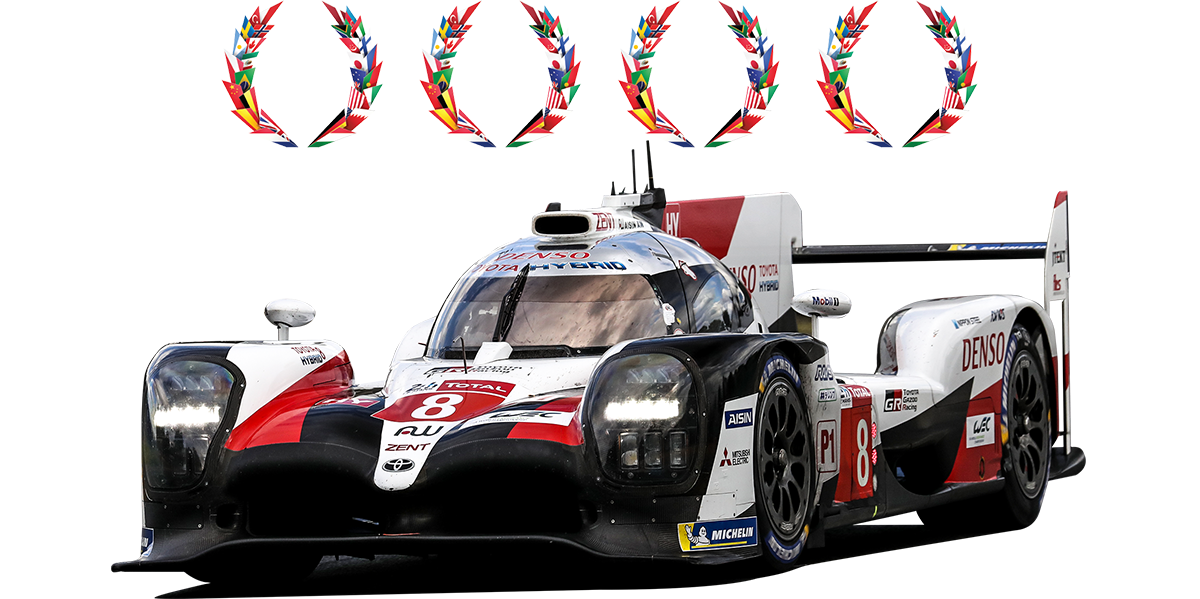
Consecutive Wins at Le Mans Despite Heavy Handicap,
and the World Title Too
From this year, FIA decided to change the WEC schedule to a Super Season spanning two years. The opening round of the series was at Spa-Francorchamps in May of 2018. Round 2 was the 24 Hours of Le Mans in June, and the final round was again at Le Mans in June of 2019. In this way, the unique 2018-2019 season had two 24 Hours of Le Mans races.
When the team failed to get the win at Le Mans in 2017, Toyota's President Akio Toyoda encouraged everyone by saying, "We can't win Le Mans if we only care about making a fast car! What we do not have is strength. We are not a strong team!" To prepare for the 2018-2019 season, the team concentrated on measures to handle the even stricter fuel consumption limitations and achieving a higher level of maturation in the TS050 HYBRID's hybrid power train with its maximum output of 1,000 hp in order to ensure greater reliability.
Under the 2018-2019 series regulations, non-hybrid cars were allowed approx. 69% more energy (max. fuel consumption per lap) than the hybrid cars. In the case of Le Mans with its Sarthe Circuit (13.6 km/lap), that meant the non-hybrid cars could use 210.9MJ of energy (approx. 5.2 kg/lap of fuel) while the TS050 HYBRID could only use 124.9MJ (approx. 3.1kg/lap).
Also, the maximum allowable fuel flow rate to the engine for the TS050 HYBRID was 22.8g/sec. (equivalent to about 80.2 kg/hr.), while the non-hybrid cars were permitted a maximum fuel flow rate of 30.5g/sec. (equivalent to about 110 kg/hr.), and the limits on car weight were also stricter than the year before, with the non-hybrid cars allowed to be 45 kg lighter than the TS050 HYBRID.
To tackle these new hurdles, the development team began reviews and revisions of every conceivable part and component of the machine, down to individual bolts, with a sharp eye for improving reliability, while also reducing the weight of the battery system, including the cooling system.
The battery of the TS050 HYBRID has an output of approx. 300kW, which is about 10 time the capacity of the one on the Prius (about 30kW), and for that reason it has greater heat output and thus needs efficient cooling. To achieve that, development efforts focused on the electrolytic solution and the material used for the cells in order to improve the battery's heat resistance and also simplify the cooling system to reduce the weight of the battery system overall, including the water-cooling device.
As a result of these improvements, in the Official Qualifying for the Le Mans race the TS050 HYBRID swept the front row, and in the race, it was able to run at a pace about 2 sec. faster per lap than the competition and dominate the race from the start to a 1-2 finish. For Toyota, this long-awaited first overall win came after some 30 years since its first attempt. And, for a Japanese car, this was only the second Le Mans overall victory, but it was the first for a Japanese car driven by Japanese driver, and also the first 1-2 finish by cars from Japan.
After continuing to win its way through the 2018-2019 season, the TS050 HYBRID was ready to take on the second 24 Hours of Le Mans, the final round of this Super Season. Once again, the performance of the TS050 HYBRID enabled it to dominate the race with the two cars leading in the battle for the lead. They went on that way to a 1-2 finish for the second straight time at Le Mans. Not only did the TS050 HYBRID record its second consecutive win but it also won the Drivers series championship title for the TS050 HYBRID drivers Sébastien Buemi, Kazuki Nakajima and Fernando Alonso Díaz, and the Team series championship title for Toyota to top off the long season with a perfect record.

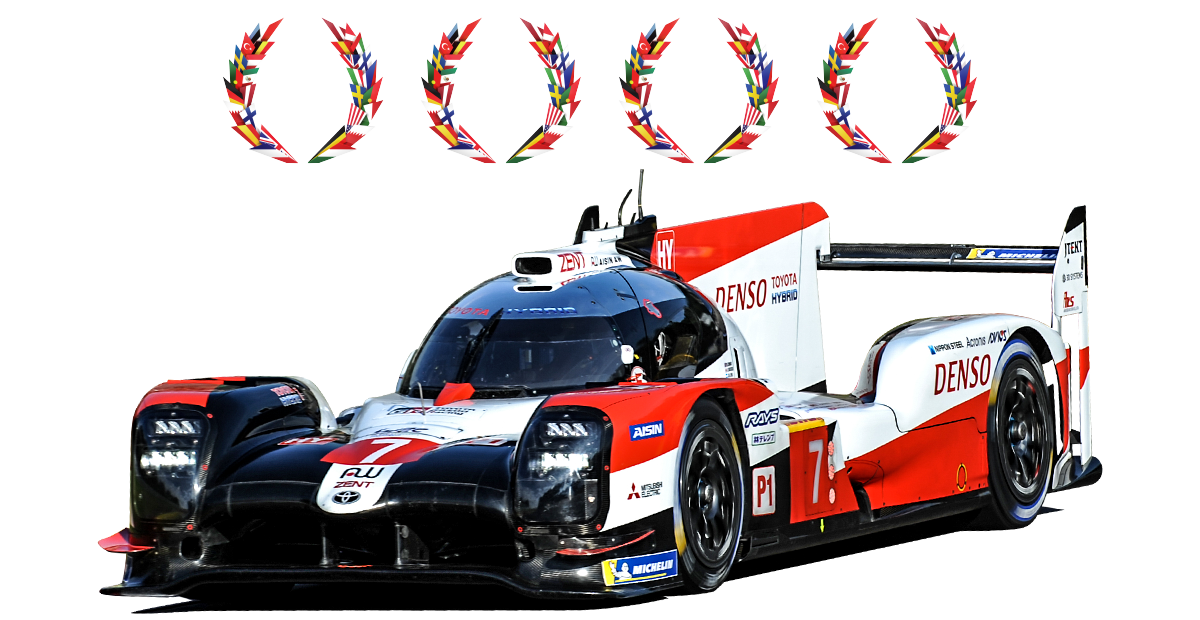
Shooting for a Third Consecutive Wins at Le Mans
in the TS050 HYBRID's last season
After having won consecutive victories at the 24 Hours of Le Mans in 2018 and 2019, the TS050 HYBRID underwent further development to make its systems and components even more polished and mature for the 2019-2020 season. Improvements were made to things like the material used for the cells and the electrolytic solution of the high-power lithium battery in order to lengthen the time that the hybrid boost could be used to the very end of the races, while also reducing battery deterioration in use and thus improve reliability. Regarding the engine itself, the same basic specification was adopted for the new season, while adding some changes to reduce the various types of friction. Meanwhile, in the area of aerodynamics, review and revision of the design of the car's front end led to adoption of a high nose and implanted side-view mirrors. The combination of reduced air resistance and improved down-force further increased the car's competitiveness.
The 2019-2020 season began with the opening round in August of 2019, but the later advent of the coronavirus (COVID-19) pandemic led to rescheduling of the later rounds, with the 24 Hours of Le Mans scheduled to take place in September, while the series' final round in Bahrain was scheduled for November.
While the technical regulations regarding performance adjustments (Balance of Performance) (BOP) for the hybrid and non-hybrid cars remained the same as those for the 2018-2019 season, the decision was made to add Success Handicap adjustments based on series points won up until the previous race for each car. However, all success handicaps would be eliminated for the 24 Hours of Le Mans race.
After the opening round and Round 2 of this season ended in 1-2 finishes for Toyota, the team then went into the subsequent races with the largest Success Handicaps, and this disadvantage resulted in non-hybrid cars winning rounds 3 and 5. However, the team came back to win two more 1-2 finishes in Round 4 and Round 6. Then for the 2020 24 Hours of Le Mans race held in September, car No. 7 won pole position in the qualifying. Despite a 30-minute delay in the race to repair machine trouble, No. 7 came back to finish the race in 3rd place. Car No. 8 then took over the lead after No. 7's delay and went on to bring Toyota its third consecutive win at Le Mans. In the final round of the season, the team scored its fifth 1-2 finish of the season. Due to the new technical regulation to be adopted in the 2021 season, this was the final WEC race for the TS050 HYBRID. In this way, its final season fulfilled Toyota's pre-season goals of winning a third consecutive victory at Le Mans and double titles for the Drivers and Team championships.
For the 2021 season, TOYOTA GAZOO Racing has already announced that it will compete with a hybrid prototype car, or a so-called "hypercar," based on the new "GR Super Sport" [tentative name] currently under development toward a production model. This marks a new challenge to further build on the THS-R technology accumulated during the development of the TS050 HYBRID.

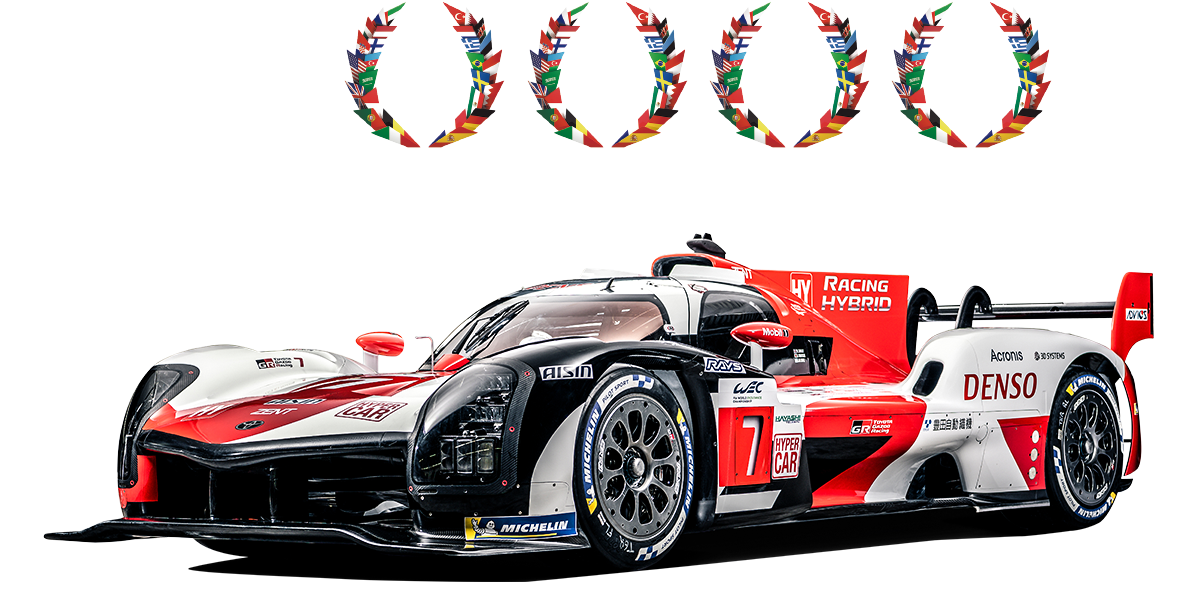
GR010 HYBRID Triumphs as First Le Mans
Hypercar Class Title Winner
For the 2021 FIA World Endurance Championship (WEC) series, the technical regulations underwent a major revision that replaced the existing LMP1 class with a new Le Mans Hypercar (LMH) class as the championship’s pinnacle class. Working from the base of hybrid car technologies garnered from TS050 HYBRID that had won three consecutive victories at the famed 24 Hours of Le Mans, TOYOTA GAZOO Racing developed a new machine in accordance with the new LMH class regulation. Dubbed the GR010 HYBRID, it was entered from the opening round of the 2021 season. From there, the GR010 HYBRID went on to win the first three rounds of that season before entering the fourth round, the 24 Hours of Le Mans.
There, the GR010 HYBRID car No. 7 won pole position in the official qualifying. Also, the No. 8 car qualified 2nd to give the GR010 HYBRID both spots on the front row of the starting grid going into the race.
The race began under a strong rainfall. Just after the start, car No. 8 was hit by another car on the wet track, which dropped it back in the field. Meanwhile, car No. 7 was also hampered by a punctured tire. Nonetheless, given their dependable speed, both GR010 HYBRIDs were able to move up through the field, and as the race entered its second half, car No. 7 had taken the lead, while No. 8 had recovered from its early loss of ground to move into 2nd position, thus giving them a 1-2 lead.
However, with about eight hours left in the race, the leading car No. 7 developed a problem in its fuel system that caused the fuel pressure to drop. In fact, the same problem had developed in car No. 8, which caused the team to shorten the first stint by one lap and gather data from both cars in search of a solution. Based on their findings, the pit engineers radioed the drivers out on the track and gave them detailed instructions for setting adjustments to deal with the problem, which enabled the two cars to maintain their positions in 1st and 2nd places.
As a result, car No. 7 managed—although with some difficulty—to hold onto the lead until the finish. With this, the team’s three drivers, Mike Conway, Kamui Kobayashi and José María López, who despite showing consistently fast speed had not yet been able to successfully win a race at Le Mans, finally were rewarded with their long-awaited first win. Also, for the team this marked their fourth straight victory at the 24 Hours of Le Mans, as well as assuring them a place in WEC history as the first winners of the new LMH class. Car No. 8 was able to finish the race in 2nd place and rendezvous with car No. 7 to take a ceremonious checkered flag together.

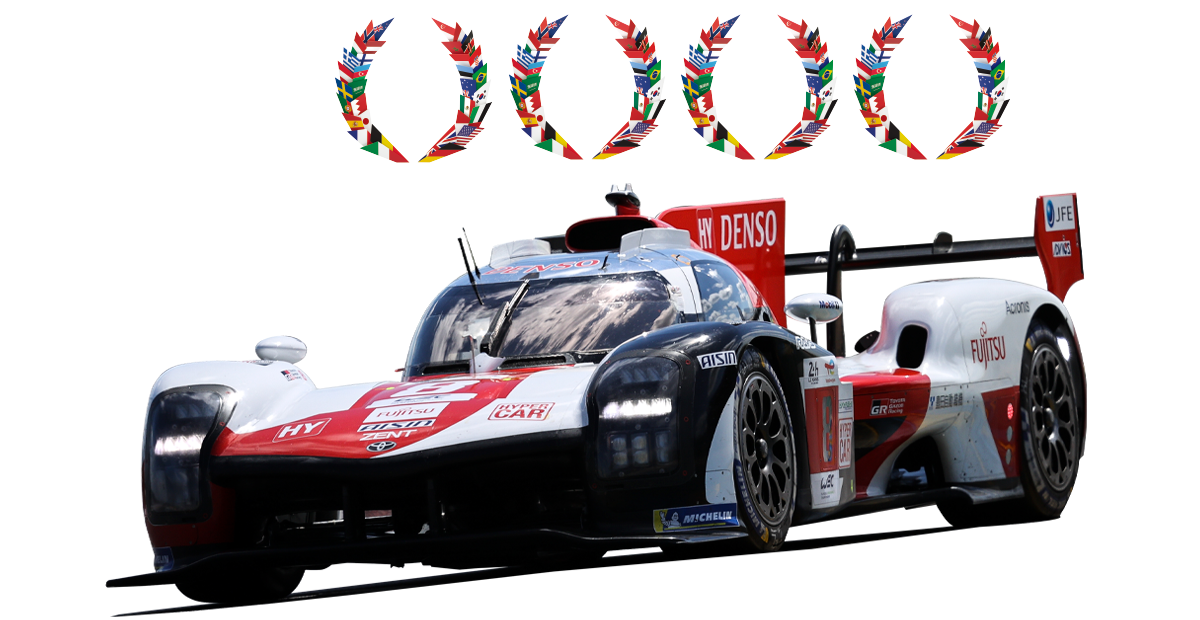
GR010 HYBRID, winner of consecutive WEC Hypercar class titles and victories at Le Mans
The FIA World Endurance Championship (WEC) Hypercar class entered its second season in 2022. The development team of TOYOTA GAZOO Racing (TGR) changed the tire and wheel size of the GR010 HYBRID within the permitted development range. To accommodate these changes, modifications were also made to the shape of the bodywork. In addition, adjustments were made in the engine to compensate for the 100% renewable fuel (carbon neutral fuel) newly introduced from the 2022 season.
Meanwhile, the GR010 HYBRID, which had won all the races in the series in 2021, was subjected to BoP (performance adjustment) that limited performance by prohibiting use of the front electric motor in the speed range of 190 km/h or less, in both dry and wet road/track conditions, thus only allowing rear-wheel drive force from the engine in the under-190 km/h speed range. As a result, the TGR team were forced to face tougher competition from their Hypercar class rivals.
Under these circumstances, the TGR development team started the season in pursuit of new control technology to achieved both high output and controllability within the scope of the regulations. As development proceeded, car No. 7 suffered problems that prevented it from finishing the race in the opening round, and the same thing happened to car No. 8 in the second round, which set them behind from the start in the title race and forced them to chase the point leaders.
However, the No. 8 GR010 HYBRID won the third round of the series, the 24 Hours of Le Mans, with newly joined driver Ryo Hirakawa, who competed in the WEC from this season. Car No. 7 ran consistently in second place, enabling the TGR team to win the race for the fifth consecutive time with a 1-2 finish. The TGR team then went on to stay in contention for the season title all the way to the final round at Bahrain, which the No. 7 car won. Meanwhile, by finishing in 2nd place, the drivers of car No. 8 (Sébastien Oliver Buemi / Brendon Hartley / Ryo Hirakawa) won the season’s Drivers championship title, and TGR also became the Manufacturer champions. This marked the second consecutive season title for the GR010 HYBRID in the Hypercar class, and the fourth consecutive double title in the WEC championship for the TGR team.

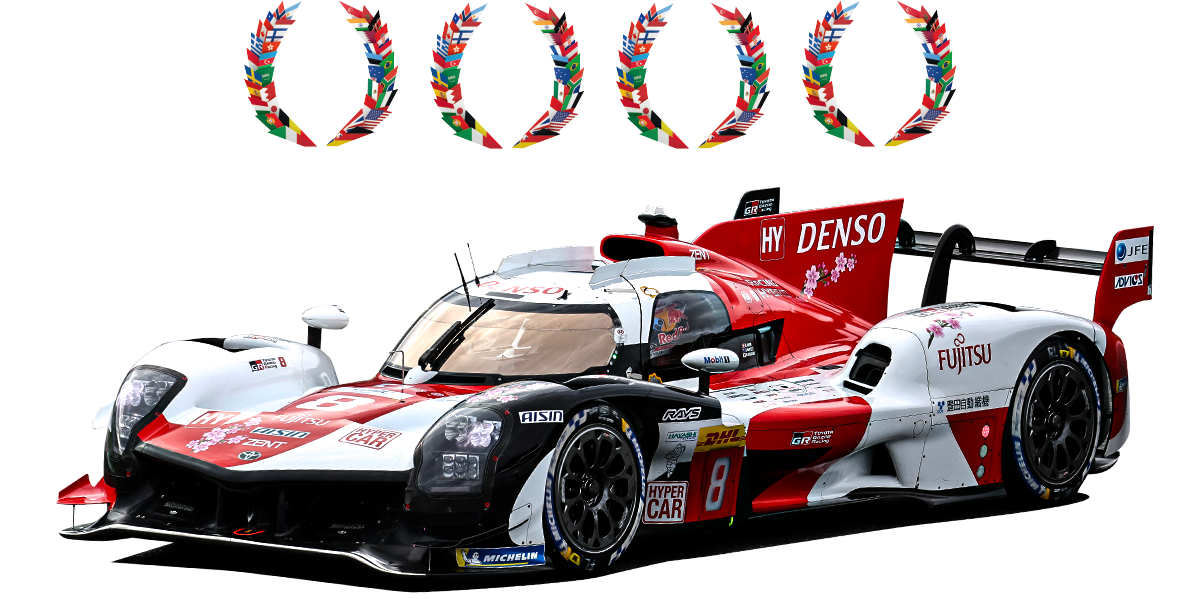
GR010 HYBRID takes third straight WEC Hypercar class title with 6 out of 7 wins
Due to a five-year prohibition on further development of new Hypercar (LMH) class models, the 2023 model GR010 HYBRID competing in its third season in the WEC (FIA World Endurance Championship) naturally continued to be based largely on the 2021 model. Also, because of the limitations set on power output and aerodynamics by the LMH class regulations, in addition to performance equalization for the chassis and power, etc. This has made it difficult to increase the absolute performance of the GR010 HYBRID, and even if it was possible, it would make little difference.
For this reason TOYOTA GAZOO Racing(TGR)has focused mainly on improvements to make the machine “easier to drive” to improve its competitiveness. Improving ease of use in this way can reduce the occurrence of driving mistakes and also reduce the load and wear on the tires, which increases tire life and reduces the number of pit stops necessary, thus bringing advantages in the way races can be conducted. In line with this policy, the team has continued to make improvements not only in chassis characteristics, including aerodynamics, but also in the power unit’s hybrid system, the THS-R.
Until now, the GR010 HYBRID had an issue involving braking performance. This was because the previous TS050 HYBRID had two electric motors, one each in the front and rear, and during braking (deceleration), the regenerative brake effect from the motors could be coordinated with the mechanical brakes by the THS-R to achieve highly efficient acceleration and deceleration. However, under the LMH regulations only one assist motor was allowed, and it had to be positioned in the front, which made it difficult to coordinate the regenerative brake effect with the mechanical brake effect in a way that maintained a good front-rear balance. In light of this, for 2023 the development team revised the THS-R control to improve the braking performance of the GR010 HYBRID.
Despite improvements like this to make the machine “easier to drive” and improve its competitiveness, due to the BoP (the biggest increase in the class in required minimum weight of 37 kg) that the GR010 HYBRID was allotted on the Wednesday before the holding of the important 24 Hours of Le Mans, it lost to the newly developed Ferrari 499P, which was entering for the first time. Nonetheless the cars No. 7 and No. 8 won six of the seven races of the series, including four 1-2 finishes. Car No. 8 driven by Sébastien Buemi, Brendon Hartley and Ryo Hirakawa won their second series championship in a row, while the TGR team took the Manufacturers Championship and also won the Hypercar class championship for the third time since it was established. Also, the team won the World Championship for the sixth consecutive year.

![RACING HYBRID [THS-R] HISTORY -History of the Evolution of Toyota's Hybrid System Racing Cars: THS-R -](/pages/contents/en/assets/images/wec/special/2020/racing-hybrid-history/sp_main.jpg)
![RACING HYBRID [THS-R] HISTORY -History of the Evolution of Toyota's Hybrid System Racing Cars: THS-R -](/pages/contents/en/assets/images/wec/special/2020/racing-hybrid-history/pc_main.jpg)
